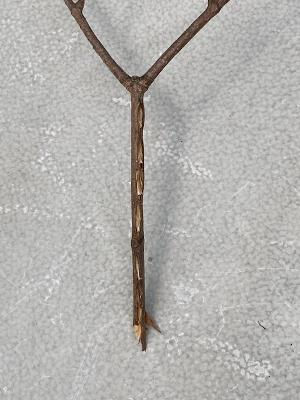68 In Memory of Brood X
- David Cochran

- Aug 16, 2021
- 3 min read
This blog about cicadas may seem like it’s reporting old news. After all, aren’t those cicadas gone for the next 17 years? Well, yes… but I felt that the Brood X cicadas that were so much a part of Blawenburg’s noise-scape in May and June should receive a fond farewell. And, by the way, a new generation is just underfoot!
The residents of Blawenburg and much of the northeastern United States had their 17-year visit from a group of cicadas known as Brood X (not Generation X, rather Group #10). After spending the previous 17 years underground, they came to the surface in May when the ground temperature reached 64 degrees. Now that they have spawned a new generation of cicadas and ended their life cycle, I thought it would be good to chronicle their visit and try to understand what was going on for the active six weeks that they were with us.

This adult cicada is one of billions of Brood X cicadas
that paid a short, six-week visit in the spring of 2021.
There are many cicada breeds that appear for varying time lengths—annually and every 13 years, for example. This brood has a life cycle of 17 years, one of the longest life cycles of any insect.
When we see or hear the cicadas, they are at the end of their life cycle. They’ve been underground as nymphs for 17 years, burrowing tunnels and eating the sap of tree roots. Scientists think that the change of seasons helps the cicadas understand the passage of time.
When cicadas come up from their tunnels, which are about eight inches below the surface, they have a hard case similar to the shell of a shrimp or lobster. They then molt and shed this protective shell. When they dry off and can flutter their wings, they fly up into trees and pursue their important mission—producing a new generation of cicadas.
Brood X cicadas are best known for the loud noise made by the males as they try to attract a mate. They produce a shrill sound by vibrating their drum-like abdomens, and if the females like what they hear, they respond by making a clicking sound. Cicadas mate with many partners during their wild month above ground.
The female plants the fertilized eggs in the small cuts known as oviposition slits at the end of tree branches. They don’t seem to care what type of trees they choose.

This female cicada is slicing a thin tree branch to deposit her eggs using an organ called an ovipositor.

A Blawenburg tree branch with oviposition slits.

Eggs are neatly deposited in the oviposition slits.
In late July or early August, the eggs become nymphs and move on to their new subterranean home. They either crawl or drop to the ground and burrow beneath the trees where they were conceived. The slits made by the female cicadas kill the end of the branches, leaving the trees looking like they have a disease. This process is called flagging. Fear not, though. These dead leaves and stems eventually fall off the tree and usually have no lasting effect on the tree.

A tree on Mountain View Road has many dead leaves, caused by flagging.
So, the noisy cicadas have come and gone. They have fulfilled their 17-year cycle, growing underground, mating, and dying after their work is done. The next Brood X will not arrive until 2038, but there are other broods coming at 13- and 17-year intervals. Stay tuned. Brood XIV will surface in 2025 in various locations in the northeast.
Facts
1. The plentiful cicadas provide food for many animals including birds, foxes, raccoons and many others. But some humans like to eat cicadas, too. They claim they are tasty and better for you than processed foods. You might want to try blackened cicadas with bacon over cheese grits.

You may not like grilled cicadas, but who doesn’t like ice cream. If you went to The Bent Spoon ice cream shop on Palmer Square in Princeton in early June, you could have sampled cicada chocolate chip ice cream. If you were brave enough to eat cicadas, let us know what your favorite cicada dish is!
2. According to cnet.com, Brood X sounds can reach 90 decibels. That’s very loud, similar to a lawn mower or a jet airplane landing.
Information Sources
Pictures
Cicada - Katha Schulz, Flickr.com
Cicada laying eggs - John Lilli, George Washington University
Blawenburg tree branch with slits - David Cochran
Eggs in a tree branch - www.yahoo.com, original source unknown
Tree with flagging - David Cochran
Cicada ice cream - https://www.facebook.com/the-bent-spoon-132592140111950
Copyright © 2021 by David Cochran. All rights reserved.




Comments